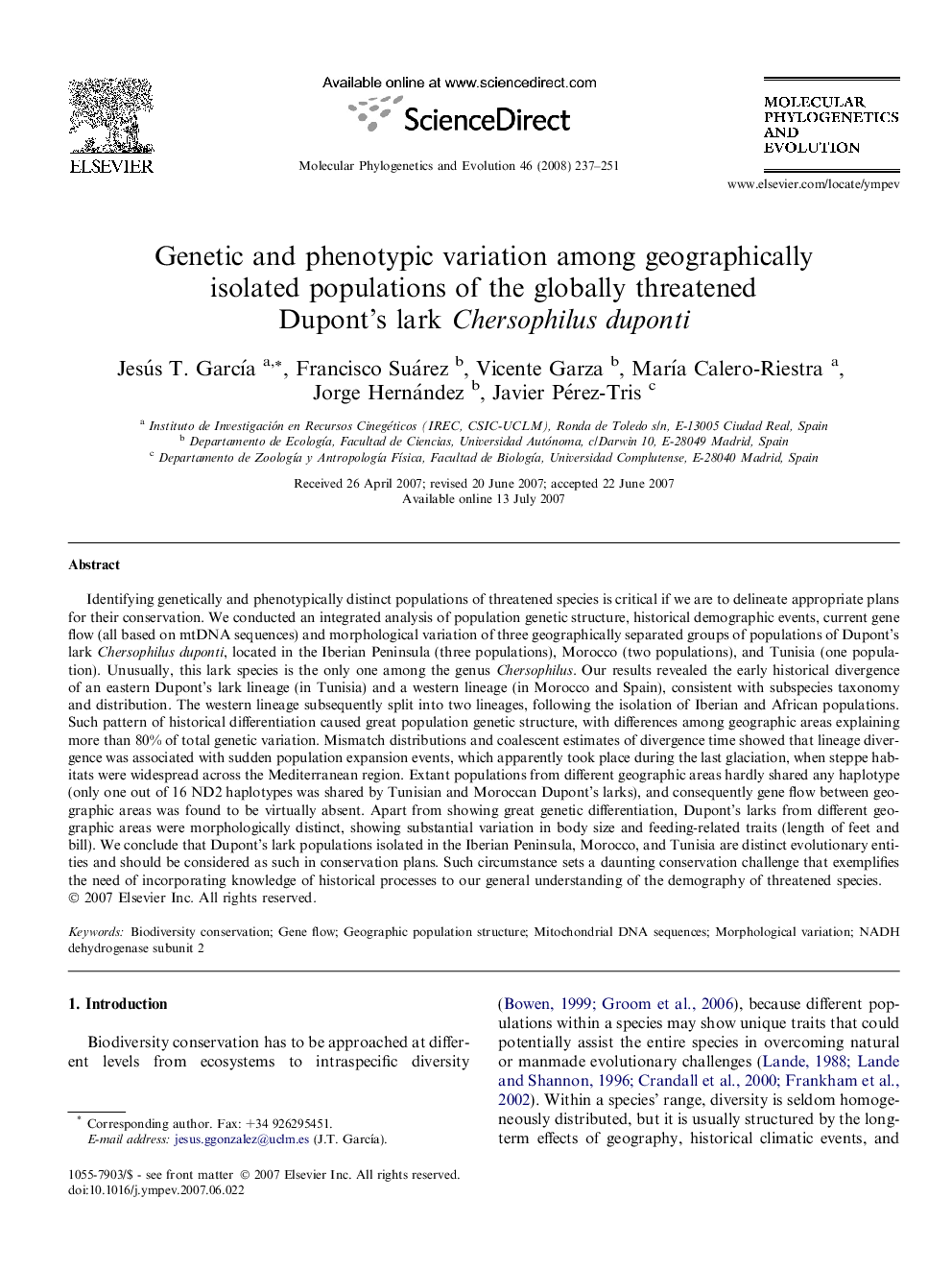| کد مقاله | کد نشریه | سال انتشار | مقاله انگلیسی | نسخه تمام متن |
|---|---|---|---|---|
| 2835407 | 1164341 | 2008 | 15 صفحه PDF | دانلود رایگان |

Identifying genetically and phenotypically distinct populations of threatened species is critical if we are to delineate appropriate plans for their conservation. We conducted an integrated analysis of population genetic structure, historical demographic events, current gene flow (all based on mtDNA sequences) and morphological variation of three geographically separated groups of populations of Dupont’s lark Chersophilus duponti, located in the Iberian Peninsula (three populations), Morocco (two populations), and Tunisia (one population). Unusually, this lark species is the only one among the genus Chersophilus. Our results revealed the early historical divergence of an eastern Dupont’s lark lineage (in Tunisia) and a western lineage (in Morocco and Spain), consistent with subspecies taxonomy and distribution. The western lineage subsequently split into two lineages, following the isolation of Iberian and African populations. Such pattern of historical differentiation caused great population genetic structure, with differences among geographic areas explaining more than 80% of total genetic variation. Mismatch distributions and coalescent estimates of divergence time showed that lineage divergence was associated with sudden population expansion events, which apparently took place during the last glaciation, when steppe habitats were widespread across the Mediterranean region. Extant populations from different geographic areas hardly shared any haplotype (only one out of 16 ND2 haplotypes was shared by Tunisian and Moroccan Dupont’s larks), and consequently gene flow between geographic areas was found to be virtually absent. Apart from showing great genetic differentiation, Dupont’s larks from different geographic areas were morphologically distinct, showing substantial variation in body size and feeding-related traits (length of feet and bill). We conclude that Dupont’s lark populations isolated in the Iberian Peninsula, Morocco, and Tunisia are distinct evolutionary entities and should be considered as such in conservation plans. Such circumstance sets a daunting conservation challenge that exemplifies the need of incorporating knowledge of historical processes to our general understanding of the demography of threatened species.
Journal: Molecular Phylogenetics and Evolution - Volume 46, Issue 1, January 2008, Pages 237–251